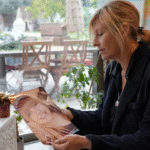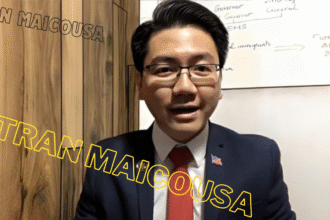In the rich and nuanced tapestry of the French language, the word figurativement occupies a unique space. Unlike its more straightforward sibling littéralement (literally), figurativement (figuratively) invites a departure from direct meaning to a realm of metaphor, symbolism, and creative interpretation. It’s a term that adds color, emotion, and depth to communication, allowing speakers to convey complex ideas with artistry and brevity.
Figurative language plays a fundamental role in how people express themselves, especially in cultures that prize eloquence and nuance—qualities deeply embedded in French society. When someone says something figurativement, they’re speaking beyond the literal truth, often to add drama, humor, or poetic flair. From literature and cinema to politics and daily conversation, this linguistic tool permeates nearly every layer of French expression.
In this article, we delve into the world of figurativement. We’ll explore its etymology, usage, cultural significance, and how it’s employed in everyday French. We’ll also touch on its pedagogical value, particularly for language learners. Whether you’re a linguist, a Francophile, or a curious learner, understanding figurativement will enrich your appreciation of the French language and open doors to more expressive communication.
Understanding Figurativement Etymology and Core Meaning
The term figurativement stems from the Latin root figurativus, meaning “representing by figure or image.” It has evolved in modern French to denote a mode of expression that departs from literal interpretation, leaning instead into metaphor and implied meaning. Where littéralement focuses on exactness and specificity, figurativement revels in abstraction and imagination.
To grasp figurativement, it’s crucial to understand its opposite. Consider the statement: “He exploded with anger.” Taken littéralement, it would imply a violent and literal detonation—clearly absurd. But figurativement, it makes perfect sense, painting a vivid image of someone overwhelmed with rage. This contrast illustrates the functional beauty of figurative language: it conveys emotion and imagery that literal expressions often fail to capture.
In everyday French, figurativement is not always explicitly stated but is often implied. For example, phrases like avoir le cœur brisé (to have a broken heart) or crever de faim (to die of hunger) are understood as figurative. These expressions, while technically impossible or exaggerated, powerfully communicate emotional states. Native speakers use them instinctively, while learners must develop an intuitive grasp of context and cultural nuance.
The misuse of littéralement in place of figurativement is a growing trend, even among native speakers. This shift has sparked debates among grammarians and language purists, highlighting the importance of preserving the integrity and distinctiveness of figurative speech.
The Role of Figurative Language in French Culture and Literature
French literature, known for its sophistication and emotional depth, thrives on figurative language. From the Romanticism of Victor Hugo to the Symbolism of Baudelaire, French writers have long used metaphors and allegories to capture the intangible—love, despair, beauty, and existential dread. Figurativement becomes a lens through which readers are invited to see beyond the surface.
Take the poetry of Arthur Rimbaud, for instance. His works brim with imagery that defies literal interpretation but stirs the imagination. Lines like “I is someone else” (translated from “Je est un autre”) make no sense literally but are laden with philosophical and psychological meaning. Here, figurativement allows the poet to challenge identity and perception in a way that straightforward language cannot.
Beyond literature, figurativement plays a vital role in French cinema, art, and even politics. Political speeches often rely on figurative expressions to evoke emotional responses and rally support. Think of Charles de Gaulle’s wartime broadcasts or contemporary presidential debates—rich with metaphors, historical allusions, and idiomatic flair.
In daily life, French culture leans into figurative expression as a form of sophistication. Witty remarks, ironic quips, and double meanings are celebrated. This fondness for layered language underscores why figurativement is not just a linguistic concept but a cultural cornerstone.
Everyday Use How Figurativement Shapes Communication

In modern French, figurativement shapes how people communicate both subtly and overtly. Idioms and metaphors are woven into daily conversations, often without conscious thought. Expressions like tomber dans les pommes (to faint, literally “to fall into the apples”) or donner sa langue au chat (to give up, literally “to give one’s tongue to the cat”) are examples of figurative phrases that are culturally understood but bewildering when taken literally.
This reliance on figurative speech creates a linguistic playground where humor, irony, and emotion flourish. It also creates barriers for non-native speakers, who may struggle to interpret the intended meaning. Yet once mastered, using figurativement enables speakers to connect more deeply with their audience and speak more naturally.
Figurative expressions often serve to lighten serious conversations or soften criticism. Saying il a un poil dans la main (he has a hair in his hand) is a gentler way of calling someone lazy than stating it outright. Similarly, metaphorical language allows people to express opinions with tact and nuance—traits highly valued in French communication.
In the digital age, social media and messaging apps have not diminished the use of figurative language. On the contrary, the brevity of text encourages clever, symbolic expressions. Emojis themselves function figurativement, often replacing entire phrases with visual metaphors. This evolution shows that figurative speech is not only surviving but adapting to modern forms of expression.
Teaching and Learning Figurativement in Language Education
For language learners, mastering figurativement is both a challenge and a milestone. It signals a shift from basic comprehension to cultural fluency. While grammar and vocabulary can be taught systematically, figurative language requires immersion, context, and cultural awareness. This makes it a vital component of advanced language education.
Teachers often introduce figurative expressions through stories, songs, and idioms, providing cultural background and visual aids to help learners connect the dots. Role-playing and dialogue practice are effective methods for helping students internalize phrases like avoir le cafard (to feel blue) or mettre les pieds dans le plat (to put one’s foot in it). These expressions may initially confuse learners but become second nature with exposure and use.
Understanding figurativement also involves recognizing tone, intention, and context. An expression may be harmless in one setting and offensive in another. Therefore, learners must develop not just linguistic but social sensitivity. This holistic approach ensures they can communicate naturally and appropriately in diverse situations.
Comparative studies show that different languages use unique metaphors for similar ideas. For example, English speakers “kick the bucket” to describe death, while French speakers say casser sa pipe (break one’s pipe). Learning these differences not only enhances vocabulary but broadens one’s worldview. It reveals how culture and language are intricately connected, making figurativement a bridge to deeper intercultural understanding.
Conclusion
The concept of figurativement extends far beyond a linguistic term—it is a window into the heart of French culture, creativity, and communication. From poetic verses to everyday idioms, figurative language empowers speakers to express ideas with elegance, emotion, and efficiency. Understanding and using figurativement enhances not only your fluency but your ability to think and feel in a new language.
As we’ve explored, figurativement is not just about saying something in a more colorful way. It reflects the values of a society that cherishes wit, metaphor, and layered meaning. Whether you’re navigating French literature, conversing with locals, or teaching the language, embracing figurative speech will enrich your experience and connection with the French-speaking world.
FAQs
What does “figurativement” mean in French?
It means “figuratively” and refers to language used in a non-literal, symbolic, or metaphorical way.
How is “figurativement” different from “littéralement”?
It means “figuratively” and refers to language used in a non-literal, symbolic, or metaphorical way.
Is “figurativement” used often in daily French conversations?
While the word itself is rare in speech, figurative expressions are extremely common in everyday French.
Can figurative expressions be translated directly into English?
Not always. Many figurative phrases are culturally specific and lose meaning when translated literally.
How can I improve my understanding of figurative language in French?
Read French literature, watch films, engage with native speakers, and learn idioms in context.
You May Also Read: https://techbusinessus.com/abercrombie-careers/





